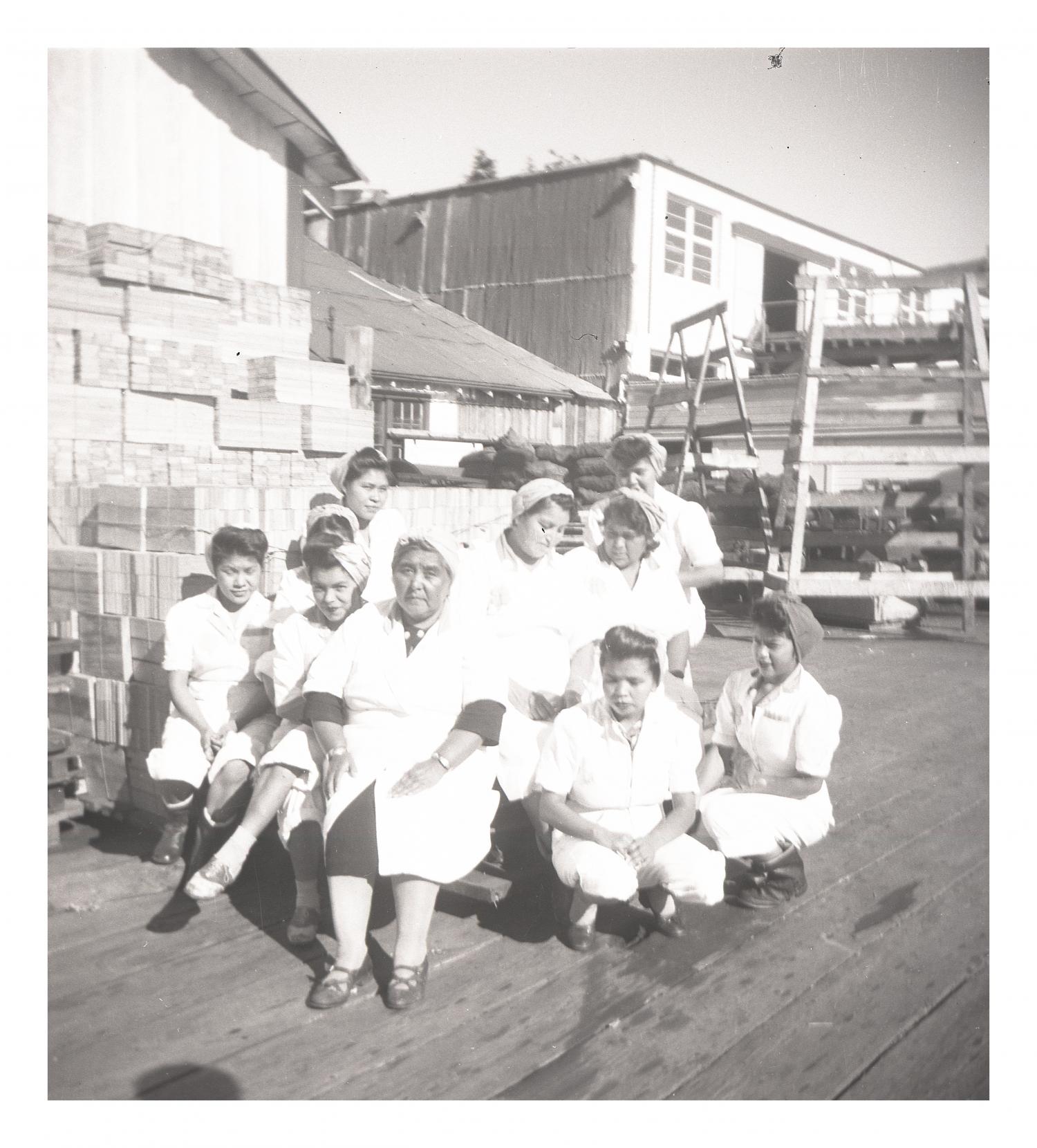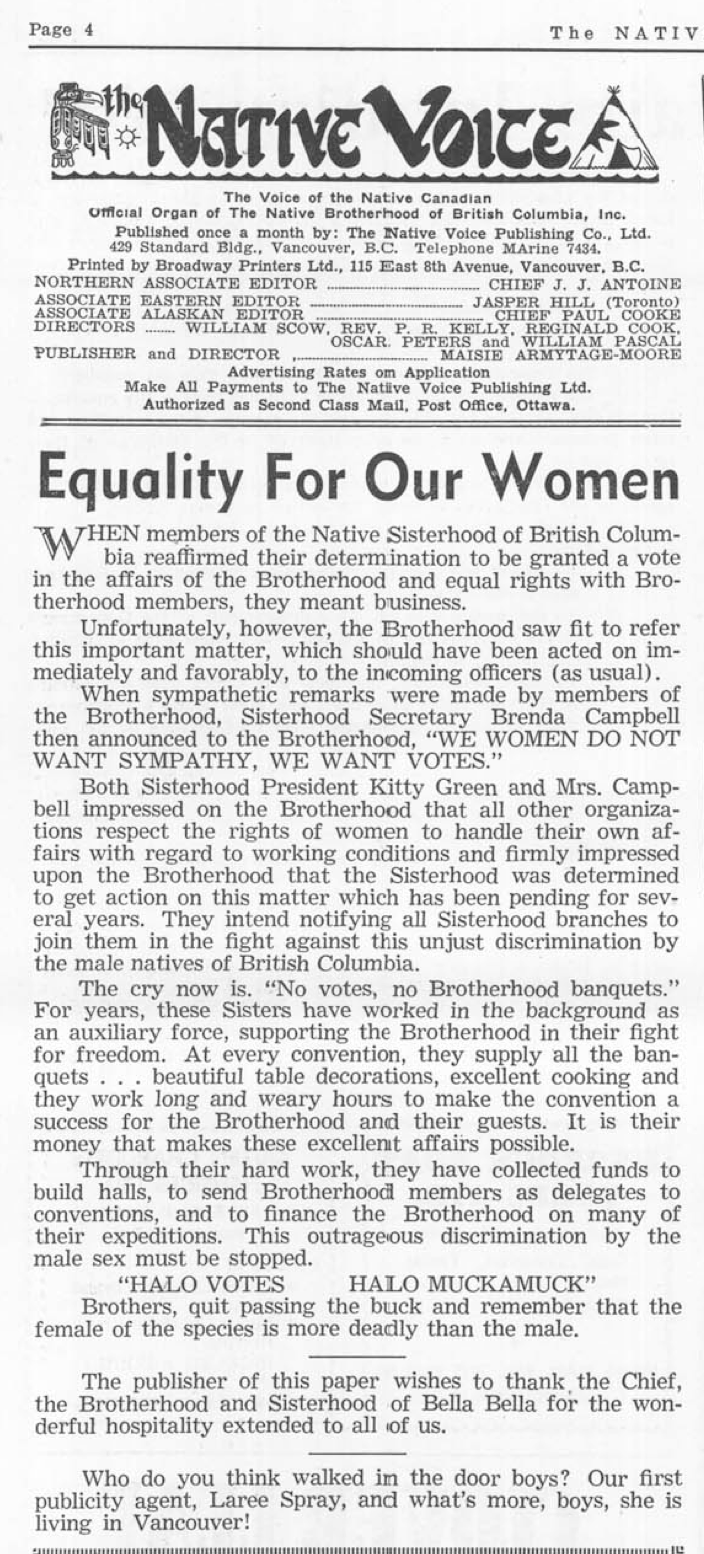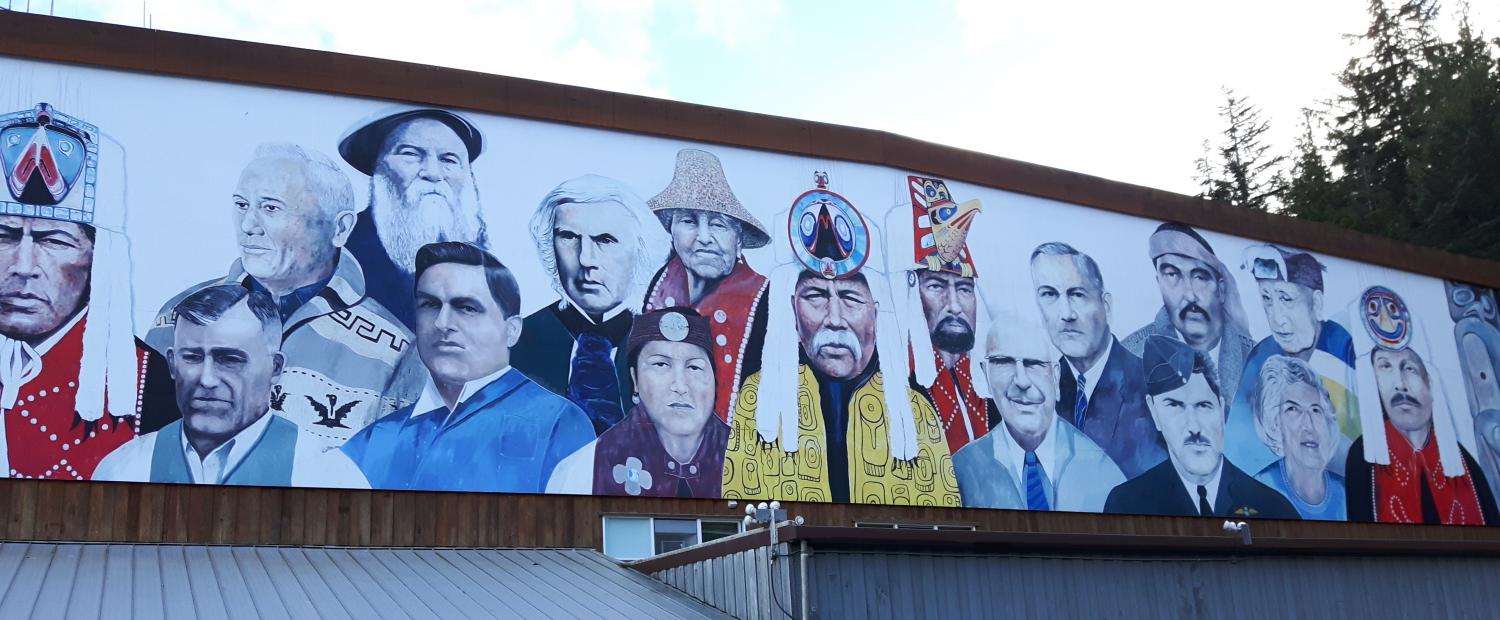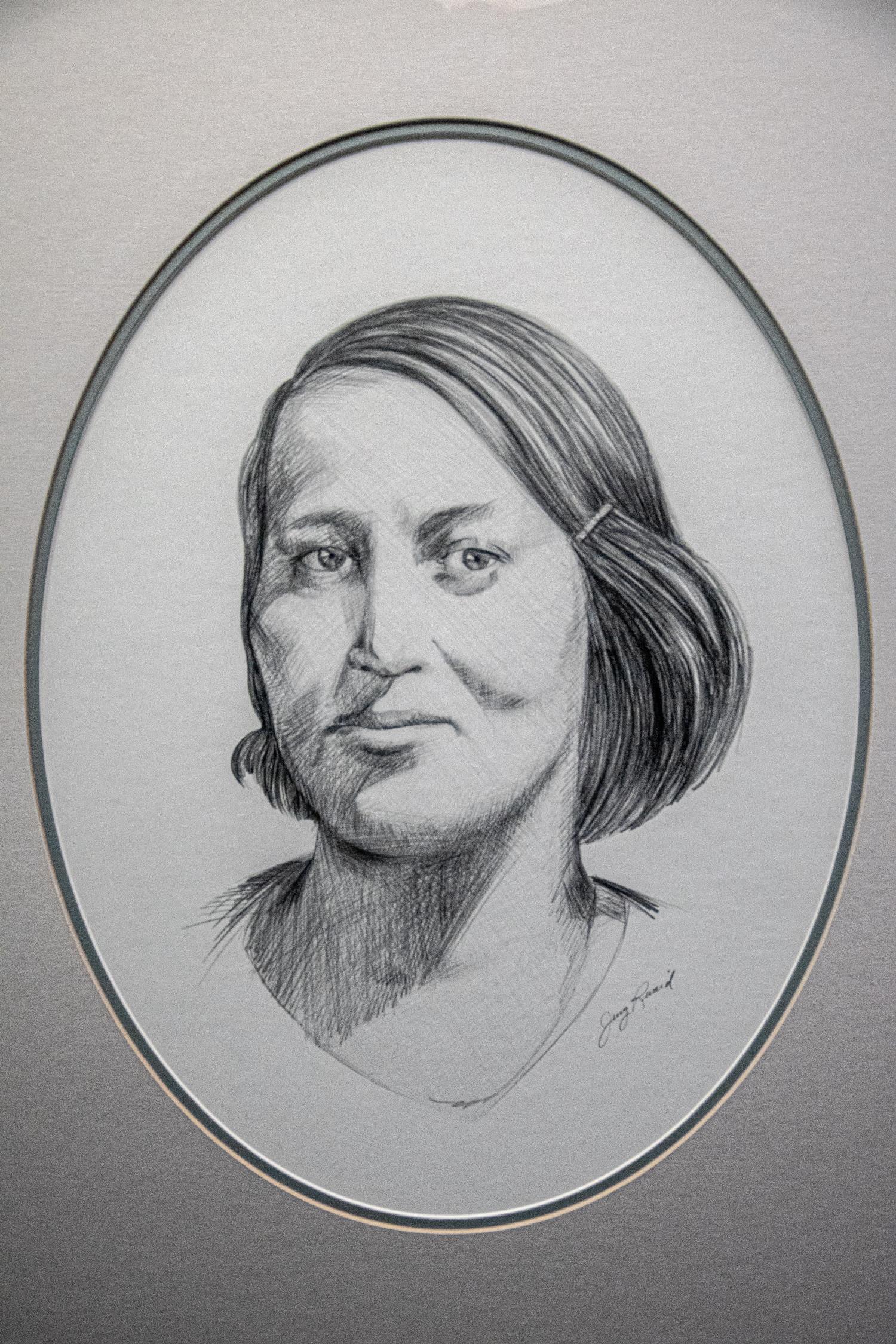The Native Sisterhood
Brenda Campbell and other Indigenous women establish groundbreaking advocacy group
Date: 1933
Brenda Campbell was only 28 when the young Heiltsuk woman pushed to form British Columbia’s first women-led Indigenous advocacy organization in 1933. By that time, Brenda had already lived a full life; her parents died when she was young, and she would later be taken from her uncle’s home in Bella Bella and sent to Coqualeetza Residential School in Chilliwack, more than 500 kilometres away. As soon as Brenda could, she returned to the coastal community of her childhood. She married a man named Sam Campbell and found seasonal employment at the Namu Salmon cannery, where many other Heiltsuk people worked.
Due to her ability and ease with English, and her understanding of the inner machinations of Canadian society, Campbell proved an asset to the Heiltsuk Nation. She offered up her services as a translator and filed others’ tax returns, including for those living in nearby Klemtu and Bella Coola. When a new group formed in 1931 to advocate for Indigenous fishermen and labourers— the Native Brotherhood of British Columbia (NBBC) — Campbell threw herself into that, as well, helping raise money, plan events and run the office.
But despite the time and energy Campbell and other women devoted to the NBBC — their central role keeping it financially afloat and overseeing membership dues — they couldn’t vote in chapter meetings. According to contemporary historians, this gender imbalance was largely the result of colonialism. Previously, such power dynamics in nations such as the Heiltsuk First Nation were more equitable. Two years after the group’s formation, NBBC founder Alfred Adams approached Campbell, asking if she’d like to start a new organization: one centred around Indigenous women. In 1933, the Native Sisterhood formed, and Campbell was made its first president. She would go on to serve for 20 years.
Over the ensuing decades, branches of the sisterhood began springing up along B.C.’s coastline, finding roots in different Indigenous fishing communities. Membership was made up of some 2,000 cannery workers, young and old. While they continued financially supporting the Native Brotherhood, raising funds for staff salaries and office space, the women of the Native Sisterhood poured their energy into other causes, as well. They arranged daycare for cannery workers and advocated for better housing and working conditions. Alongside the Brotherhood, the group focused on important political issues like legislative justice, as well as Aboriginal health and education for children. They travelled throughout the province, calling for adequate housing and resources for children at residential schools. On one such trip in the 1950s, then-president Kitty Carpenter found schools in Kitkatla and Klemtu, two Tsimshian communities along the north coast, in such disrepair that she personally made a call to Ottawa. Lumber and other building supplies were obtained, and the schools were repaired.
Through the efforts of the Native Sisterhood, women would eventually gain the vote in the Native Brotherhood, and Campbell later served as NBBC’s vice president. She remained active in the Heiltsuk and Bella Bella communities until her death on March 7, 1964. A portrait of Campbell hangs at the Native Brotherhood’s offices in recognition of all she contributed to the organization.
Sources:
1. Brown, Pamela Therese. Cannery Days a Chapter in the Lives of the Heiltsuk. University of British Columbia, Dec. 1993, open.library.ubc.ca/cIRcle/collections/ubctheses/831/items/1.0087322.
2. Eastwood, Kevin. “Interview with Brenda Taylor, Daughter of Brenda Campbell.” 2020.
3. Eastwood, Kevin. “Interview with Charlene Taylor, Grand-Daughter of Brenda Campbell.” 2020.
4. Harper, Sarah, et al. Indigenous Women Respond to Fisheries Conflict and Catalyze Change in Governance on Canada’s Pacific Coast. Springer Nature, 29 Aug. 2018, www.aquaculturewithoutfrontiers.org/wp-content/uploads/2014/11/Harper2018_Article_IndigenousWomenRespondToFisher.pdf.
5. The Native Brotherhood of British Columbia. Submission to the Royal Commission on Aboriginal Peoples. July 1993, data2.archives.ca/rcap/pdf/rcap-583.pdf.
6. O’Donnell, Jacqueline Patricia. The Native Brotherhood of British Columbia 1931-1950 : a New Phase in Native Political Organization. University of British Columbia, June 1985, open.library.ubc.ca/cIRcle/collections/ubctheses/831/items/1.0096506.








